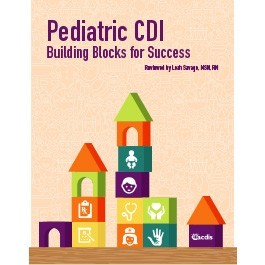Book excerpt: Pediatric publicly reported data

Blocks for Success
When it comes to children’s hospitals, U.S. News and World Report is perhaps the most ubiquitous, and arguably, it uses the most clear-cut methodology for data abstraction. U.S. News and World Report has included pediatrics in their list of the best hospitals since 1990, but did not begin a specific children’s hospital list until 2007. Since 2016-2017, using the rankings they’ve compiled, U.S. News and World Report has published a list of the top 100 children’s hospitals in the country. The list currently includes both freestanding children’s hospitals and pediatric wings within larger facilities, provided they are large enough to encompass multidisciplinary pediatric specialties.
Earning a place on the list is a major accomplishment for any pediatric facility.
The Best Children’s Hospitals ranks the top 50 centers in 10 specialties:
- Cancer
- Cardiology and heart surgery
- Diabetes and endocrinology
- Gastroenterology and gastrointestinal surgery
- Neonatology
- Nephrology
- Neurology and neurosurgery
- Orthopedics
- Pulmonology
- Urology
The data used to produce the final rankings is collected by RTI International, an independent, nonprofit institute that provides research, development, and technical services. Their methodology reflects the level and quality of the following areas:
- Hospital resources directly related to patient care (e.g., staffing, technology, and special services)
- Delivery of healthcare such as reputation among pediatric specialists, infection prevention, and adherence to best practices
- Clinical outcomes such as patient survival, infection rates, and complication rates
The components of the rankings reflect the Donabedian paradigm which measures structure, process, and outcomes—three crucial components of healthcare. Each of those three concepts is worth exactly one third of the hospitals’ overall scores. Though this is the same weighting system as U.S. News and World Report uses for its adult ranking, the scoring methodology for the pediatric rankings differs significantly in including specific measures for pediatrics which are developed and updated on an as-needed basis. Once the survey is developed (most recently in 2015 for the 2016-2017 rankings), it is distributed to facilities prior to the collection period to allow adequate time for review. The structural portion include 27 separate measures, some applying to all specialties and others to only select specialties. Though there are fewer in number, the process component still accounts for a third of the overall score and encompasses many items under each of the three measures, divided by specialty.
The process component in the Best Children’s Hospitals includes three measures:
- Commitment to best practices
- Ability to prevent infections
- Reputation with pediatric specialists
The final component of the score is outcomes. In this component, the risk-adjusted mortality 30 days after admission is a crucial measure, but other measures include quality indicators such as readmissions following surgical or hospital discharge, patient functional status or improvement, infection rates, and medical complications. The outcome measures are also divided by specialty group.
Editor’s note: This article is an excerpt from the book Pediatric CDI: Building Blocks for Success.
